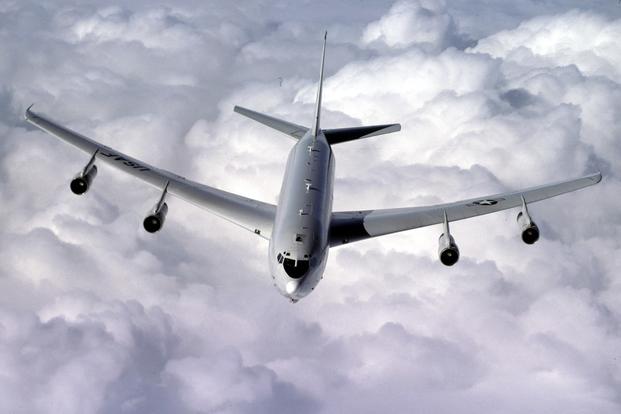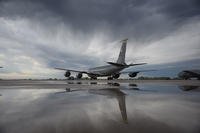Lawmakers may back the U.S. Air Force into a corner on the Joint Surveillance Target Attack Radar System, known as JSTARS, program, saying they'll restrict funding to the proposed alternative to the aircraft.
JSTARS is capable of developing, detecting, locating and tracking moving targets on the ground. The Air Force has a relatively small fleet of the aircraft, and top service officials have indicated investment in the airframe has limited returns. But some members of congress continue to advocate for recapitalization, despite Air Force efforts to kill the program.
The House Armed Services tactical air and land forces subcommittee in their markup to the fiscal 2019 National Defense Authorization Act Wednesday said they will cap funding for the Advanced Battle Management System (ABMS) initiative until the Air Force restores the JSTARS recapitalization program contract.
"The restriction would remain in effect until the Secretary of the Air Force certifies to the congressional defense committees that the [JSTARS] recapitalization program, as submitted and described in the fiscal year 2018 budget request, is proceeding unhindered with originally planned activities," lawmakers said in the NDAA markup.
Related content:
- Air Force Kills JSTARS Upgrade
- JSTARS Replacement Decision Due by End of October
- Lawmakers: Air Force May Scrap E-8 JSTARS Upgrade
Those planned activities are to include engineering, manufacturing and development; low-rate initial production; production; and initial contractor support for JSTARS, they said.
The Air Force in February said they would not move forward with the recap program even after the service in 2016 launched a $6.9 billion request for proposal for the engineering, manufacturing and development phase of the upgraded aircraft.
It had planned to buy 17 new aircraft.
As an alternative, the Air Force wanted to use ABMS for the developing battlespace. ABMS would leverage information gathered off various sensor technologies on air, land or sea systems through a networked approach.
For example, the service is planning to expand its sensor suite by adding the technologies to platforms such as the MQ-9 Reaper.
Lawmakers aren't sold on that either.
The new language would also "require the Comptroller General of the United States to provide a report to the congressional defense committees that assesses the acquisition strategy associated with ABMS," the NDAA markup said.
Lawmakers are now requiring Air Force Secretary Heather Wilson to submit a report to the appropriate congressional defense committees "that includes a strategy for accelerating the
JSTARS recap program, while also managing appropriately the legacy fleet of E-8C aircraft," it said.
"JSTARS is about battlefield command and control," Wilson said during a speech in early October.
But there has been a capability gap, she said.
"They're very important to people on the ground to get air support where they need it. But they're only meeting 5 percent of the [combatant commander] requirement. They have to go back and refuel; there are only a limited number of airframes," she said at the time.
The airborne command and control plane, a modified Boeing 707-300 series commercial airframe that can fly as high as 42,000 feet, is "extensively remanufactured and modified with the radar, communications, operations and control subsystems," including a prominent 27-foot bathtub-like radome under the fuselage, according to the service.
Currently, 16 E-8 aircraft are headquartered at Robins Air Force Base, Georgia.
-- Oriana Pawlyk can be reached at oriana.pawlyk@military.com. Follow her on Twitter at @oriana0214.










